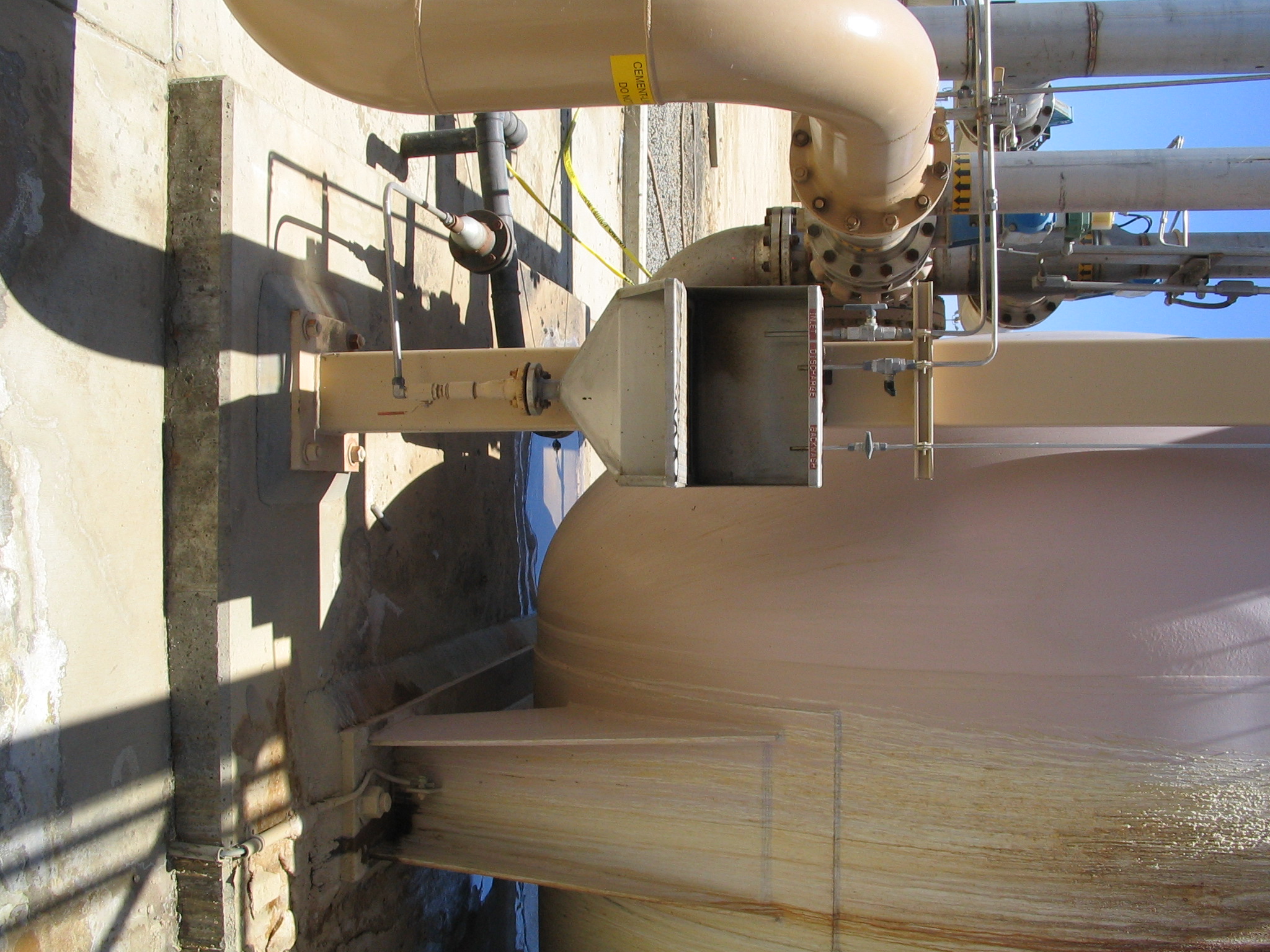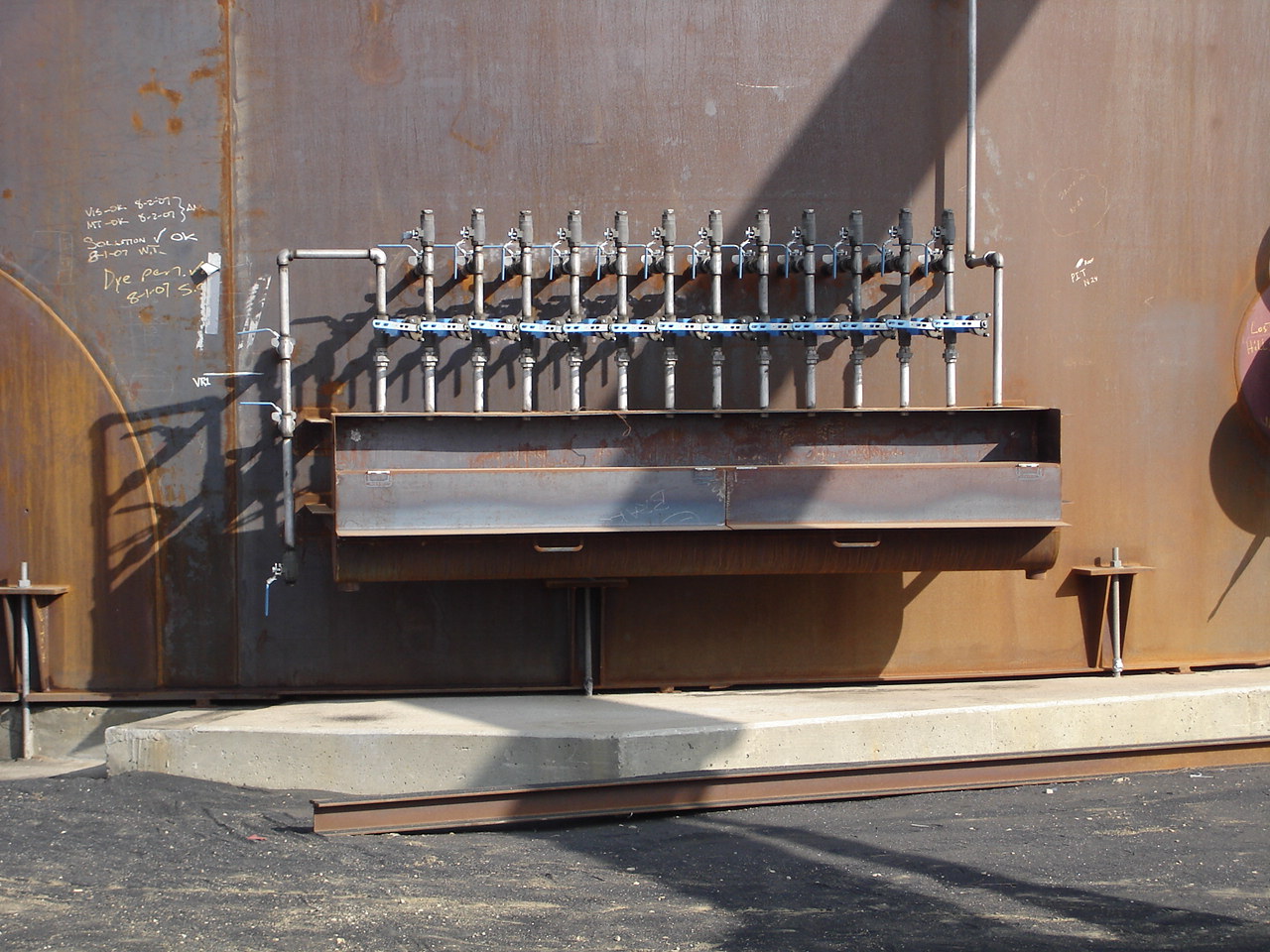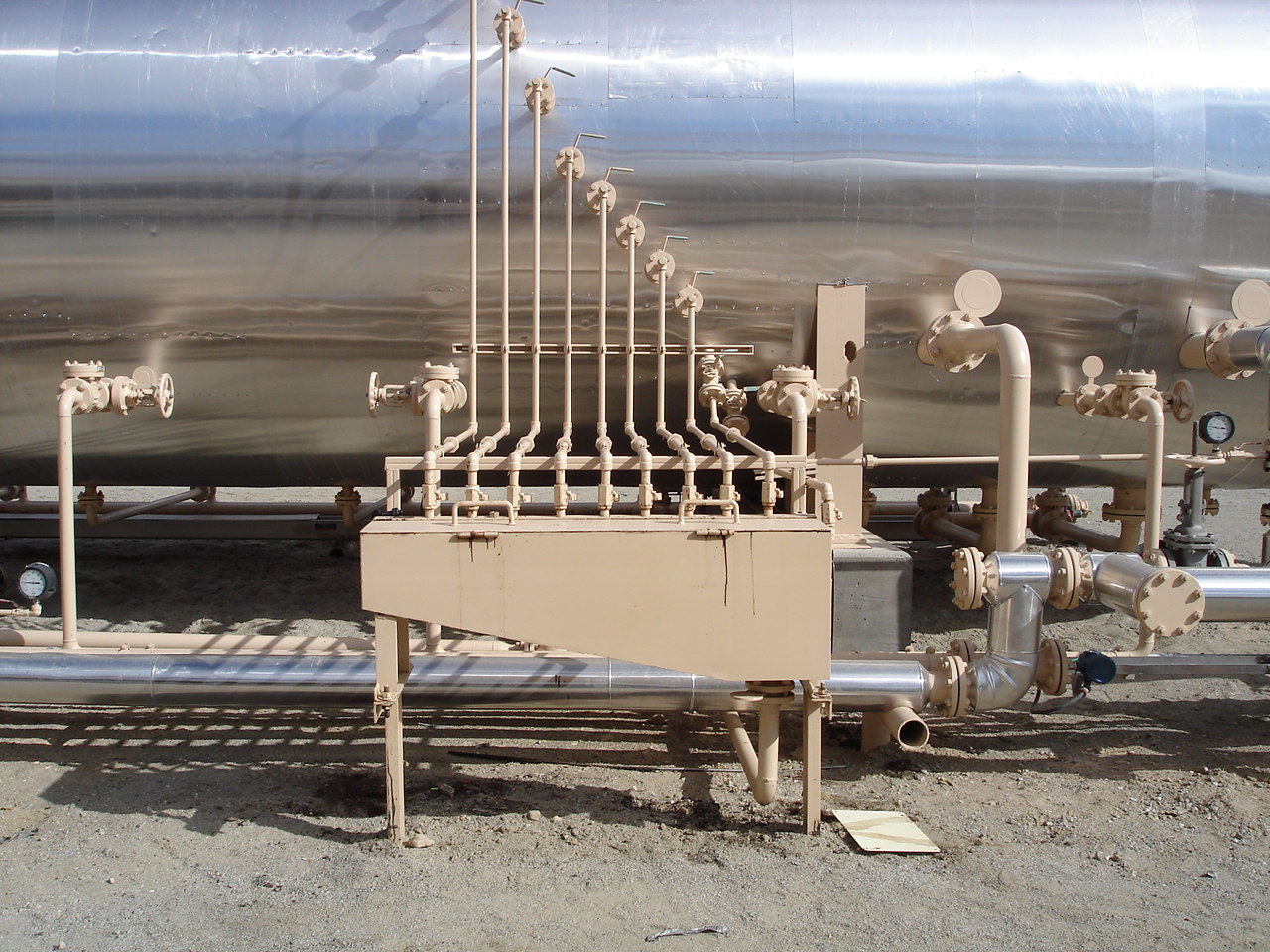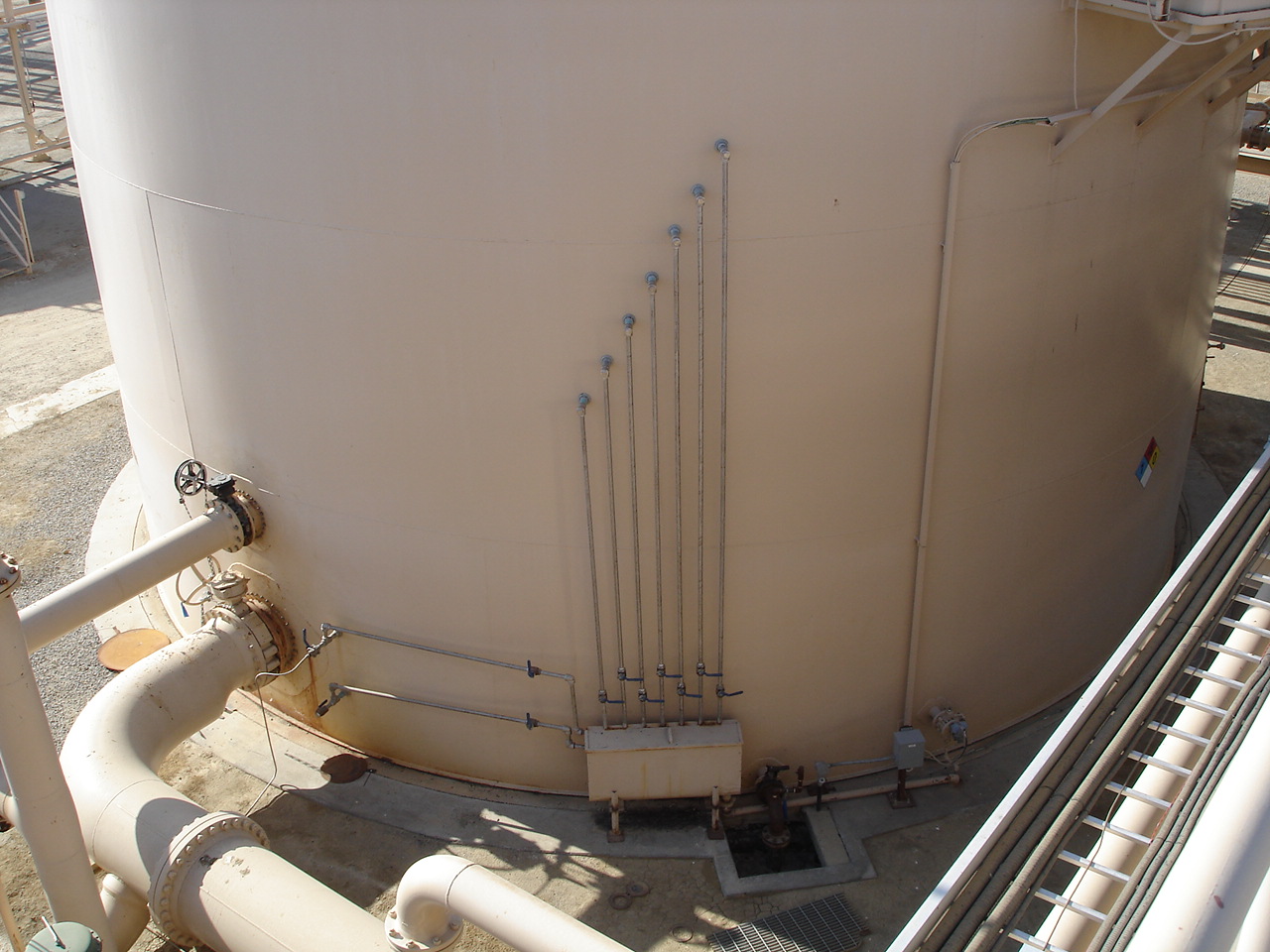

The way it works is there are several ports installed on the vessel at known elevations. These are generally 3/4" to 1" couplings, depending on the designer's preference. These are couplings so that they can be easily removed and cleaned out in the event they get plugged. For sandy service or heavy oil service, a larger connection is usually preferrable. During operation of the vessel, an operator may want to verify the location of the oil/water interface or may want to check the height of an oil pad. By opening the valves at the set locations, the operator can determine the level.
Sample Box Advantages and Disadvantages | |
|---|---|
| Advantages | Disadvantages |
|
|
It should be noted that these are generally used for low pressure tanks and vessels. While they can be used for higher pressure vessels, care needs to be taken to ensure that the operator and other personnel do not get exposed to high pressure or high temperature process fluids. Additionally, if there are poisonous gasses, such as Hydrogen Sulfide, there should be provisions (such as a fan) to blow the gasses away from the operator. The sample box will need a receptacle to collect the production fluids. Often times, this is sent to a gravity drain system. If there is no system available, the drainbox should have enough volume to hole the fluid so it can be removed with a vacuum truck or a series of buckets.
Reasons for Oil Field Sample Box
An oil field sample box, often referred to as a sample container or sample kit, is a container or kit used in the oil and gas industry to collect, store, and transport samples of oil, gas, water, or other substances from oil fields, well sites, and production facilities. These samples are essential for various purposes, including reservoir analysis, production optimization, environmental monitoring, quality control, and regulatory compliance. Here's how oil field sample boxes are typically used.
Sample Collection - Oil field technicians and geologists use sample boxes to collect samples of oil, gas, water, and other fluids or solids from various points in the production process. This can include samples from wellheads, pipelines, separators, tanks, and more.Preservation - Depending on the type of sample and its intended analysis, the sample box may contain specific preservatives or additives to maintain the sample's integrity and prevent contamination or degradation during transport.
Labeling - Each sample container is usually labeled with critical information such as the well or facility location, date and time of collection, depth or pressure information, and the specific purpose of the sample.
Transport - Once collected and properly sealed, these sample boxes are transported to laboratories or analytical facilities for further testing and analysis. They may be transported via specialized carriers or shipped to the destination.
Analysis - In the laboratory, scientists and analysts perform a wide range of tests and analyses on the samples. These tests can include measuring properties such as chemical composition, viscosity, density, pH, sediment content, and more. The results of these analyses are critical for reservoir characterization, production optimization, environmental impact assessments, and quality control.
Regulatory Compliance - In many cases, oil and gas companies are required to collect and analyze samples to ensure they are complying with environmental regulations and safety standards. Sample boxes help document and demonstrate compliance.
Research and Development - Oil field samples are also used in research and development efforts to develop new technologies and processes for oil and gas extraction, refining, and environmental impact reduction.
Documentation and Reporting - All data related to sample collection, analysis, and results are documented and reported to regulatory agencies, company management, and other stakeholders.
Oil field sample boxes are typically designed to be sturdy and resistant to leaks or contamination to ensure that the samples collected remain representative of the conditions in the field. Proper handling and documentation of samples are critical to maintaining the accuracy and reliability of the data collected, which in turn supports safe and efficient oil and gas operations.


